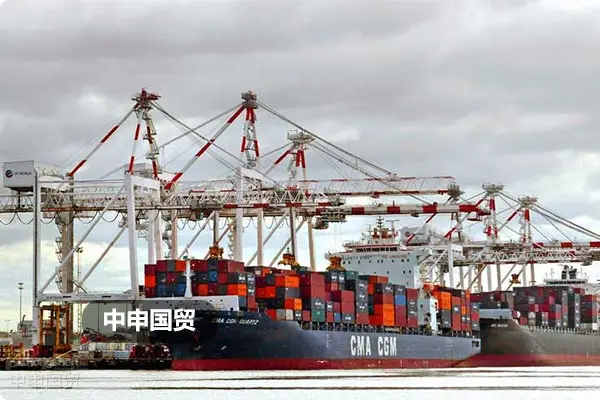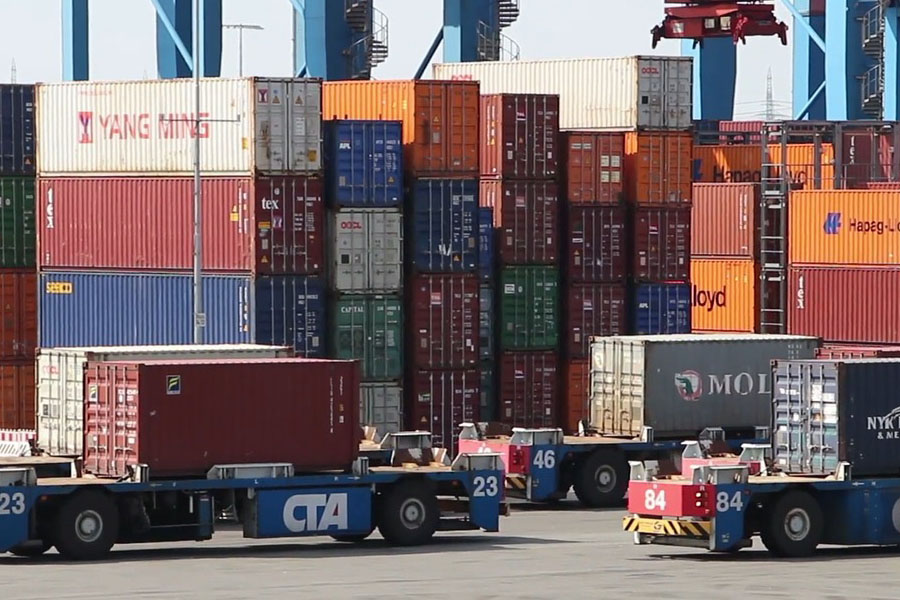- Shanghai Zhongshen International Trade Co., Ltd. - Two decades of trade agency expertise.
- Service Hotline: 139 1787 2118

Introduction
In the increasingly interconnected global trade landscape, importing gloves from Japan presents both opportunities and challenges. For importers, a clear understanding of the entire import process, familiarity with different market characteristics, and a grasp of international trade dynamics are key to successful business operations.ZhongShen International TradeAs a dedicated professional in the field of...Export RepresentationThe service company is here to provide you with a detailed analysis of all aspects involved in importing gloves from Japan.
The Professional Approach to Document Processing
Importing gloves from Japan requires handling documentation as the primary step. The commercial invoice is indispensable, as it provides detailed information about the goods, including descriptions, quantities, and values, serving as a crucial basis for customs valuation and taxation. The packing list clearly presents the packaging details of the gloves, such as the quantity, dimensions, and weight per carton, facilitating customs inspection of the goods.
ZhongShen International Trade has extensive experience in document processing. We are well-versed in the format and content requirements of various documents, ensuring their accuracy and completeness. Taking commercial invoices as an example, we meticulously fill in the HS Code (Harmonized System Code) for the goods. For instance, gloves are generally classified under specific textile categories, and the accurate HS Code helps avoid customs classification disputes and reduces clearance time. Additionally, we carefully verify the trade terms on the invoice. For example, if the CIF (Cost, Insurance, and Freight) term is adopted, it means the seller is responsible for delivering the goods to the designated port of destination and covering the insurance and freight costs. We ensure that the division of responsibilities and costs is clear and explicit, safeguarding the interests of the importer.
When handling the Bill of Lading (B/L), we will select the appropriate type of B/L based on the importer's requirements. If it is a Telex Release B/L, it can expedite cargo pickup, but we must ensure the safety of payment. We will maintain close communication with the shipping company to promptly obtain B/L information, avoiding cargo detention at the port due to B/L-related issues.
Strategies and Key Points of Logistics Arrangement
When transporting gloves from Japan to China, the choice of logistics method is crucial.Maritime TransportationIt is a relatively common method due to its large capacity and low cost. Japan has several major ports, such as Tokyo Port and Osaka Port, from which goods can be shipped to major ports in China via regular liner services.
ZhongShen International Trade demonstrates outstanding professional capabilities in logistics arrangements. We have established long-term partnerships with several renowned shipping companies, enabling us to secure more favorable freight rates and stable shipping space. During the booking process, we reserve shipping space in advance based on the estimated shipment time of the goods to avoid transportation delays caused by space shortages. Additionally, we closely monitor the transportation status of the goods and track vessel movements in real-time to ensure timely delivery.
For glove imports with higher timeliness requirements, consideration can also be given toAir TransportationAlthough air freight costs are relatively high, its speed makes it ideal for meeting urgent restocking needs. We will assist importers in selecting the appropriate airline and handling the necessary air freight procedures to ensure the safe and swift delivery of goods.
After the goods arrive at the destination port, we are responsible for arranging customs clearance and cargo pickup. We are familiar with the customs clearance procedures at various domestic ports and can quickly handle customs declaration, inspection, and other formalities, reducing the dwell time of goods at the port and lowering storage costs.
The unique advantages of the Russian market – VTBFX Settlement AgencyConvenience
If the import glove business involves the Russian market, ZhongShen International Trade holds a significant advantage—VTB settlement convenience. In trade with Russia, settlement is a critical step. Typically, settlement involves complex processes and risks. Taking the T/T (Telegraphic Transfer) payment method as an example, the importer needs to remit the payment to the exporter via bank transfer.
However, Russia's financial environment possesses certain unique characteristics. VTB (Russia'sforeign tradeAs a key financial institution in Russia, VTB Bank has established a strong cooperative relationship with ZhongShen International Trade. Utilizing VTB's channels for foreign exchange settlement can streamline processes, enhance efficiency, and reduce risks. When importing gloves from Japan for sale in Russia, VTB offers us more flexible settlement methods. For instance, in compliance with relevant regulations, we can apply for shorter settlement cycles to accelerate fund recovery. Additionally, VTB has an in-depth understanding of Russian trade laws and policies, helping us avoid foreign exchange settlement issues caused by policy changes.
In terms of the specific operational process, first, the importer signs a trade contract with the Russian client, clearly specifying the payment method and settlement bank. Then, ZhongShen International Trade will assist the importer in preparing the relevant foreign exchange settlement documents, such as commercial invoices and copies of bills of lading, and submit them to VTB. After verifying the documents without discrepancies, VTB will conduct the foreign exchange settlement operation according to the agreed exchange rate and settlement method, transferring the funds to the exporter or relevant parties. This convenient foreign exchange settlement method provides strong support for importers engaging in glove trade in the Russian market.
Southeast Asian Marketimport and exportProcess and Solution
The Southeast Asian market also holds significant importance for glove imports. Taking the example of importing gloves from Japan and then exporting them to a Southeast Asian country (such as Vietnam), the entire process involves multiple steps.
First is the trade negotiation phase. The importer needs to confirm key terms with the Japanese supplier, such as glove specifications, quantity, price, and delivery schedule. During this process, it is essential to fully understand Japan's trade regulations—for example, Japan may have quality standards and environmental requirements for glove exports. At the same time, it is also necessary to familiarize oneself with Vietnam's import policies, as Vietnam might implement an import licensing system for gloves or have special inspection and quarantine requirements for gloves made of specific materials.
After signing the contract, the process moves to transportation and customs clearance. To transport gloves from Japan to Vietnam, options include sea freight or land transport (if transiting through a country bordering Vietnam). For sea freight, the goods depart from Japanese ports and arrive at major Vietnamese ports such as Ho Chi Minh Port. Before the goods reach Vietnamese ports, ZhongShen International Trade will prepare the necessary customs clearance documents in advance, including commercial invoices, packing lists, bills of lading,It is recommended to verify through the following methods:Books, etc. Vietnamese customs will inspect and levy taxes based on these documents. For glove products, different tax rates may apply depending on their material and purpose.
After being imported into Vietnam, if it involves re-export to other Southeast Asian countries, it is necessary to comply with the correspondingEntrepot TradeRegulations. For example, it is necessary to ensure that the origin labeling of goods complies with the requirements of the destination country to avoid trade disputes arising from origin issues. ZhongShen International Trade will assist importers in handling the relevant transshipment procedures to ensure the smooth flow of goods.
For the Southeast Asian market, we also offer customized solutions. If importers wish to establish inventory centers in Southeast Asia, we can assist in warehouse leasing, inventory management, and arrange distribution based on market demand. For clients with higher quality requirements, we can arrange third-party inspection agencies in Japan to inspect the goods, ensuring that the gloves meet the quality standards of the Southeast Asian market.
Challenges and Opportunities in the Current International Trade Landscape
The current international trade situation is complex and ever-changing, presenting both challenges and opportunities for the glove import business from Japan.
From the perspective of challenges, the rise of trade protectionism poses a significant difficulty. Some countries may increase tariffs on imported gloves or impose non-tariff barriers to protect their domestic industries. For instance, certain nations might enforce stringent quality certification requirements for imported gloves, such as the EU's CE certification. If glove products fail to meet the relevant standards, they will be unable to enter the local market. Additionally, exchange rate fluctuations also heighten trade risks. The instability of currencies like the Japanese yen, the Chinese yuan, and other related currencies may lead to increased import costs or reduced profit margins.
However, opportunities also exist. With the gradual recovery of the global economy, the market demand for gloves is showing a trend of diversification. Beyond traditional labor protection gloves and cold-resistant gloves, niche markets such as fashion gloves and medical gloves are experiencing rapid growth in demand. Moreover, the development of digital trade has provided new platforms for import businesses. Through e-commerce platforms, importers can communicate and transact more conveniently with Japanese suppliers and global customers, thereby expanding sales channels.
Zhong Shen International Trade closely monitors changes in the international trade landscape and promptly provides importers with coping strategies. In response to trade protectionism, we assist importers in gaining early insights into the policies and regulations of target markets, adjusting product strategies, and meeting certification requirements. Regarding exchange rate fluctuations, we advise importers to utilize financial instruments such as hedging to lock in exchange rate risks.
Assistance and Support for Product Certification Services
During the process of importing gloves from Japan, product certification is a crucial step that cannot be overlooked. Different markets have varying certification requirements for imported gloves. For instance, the U.S. market may require gloves to pass ASTM certification to ensure product quality and safety. The European Union, on the other hand, enforces strict REACH regulations that restrict the use of certain chemicals. If gloves contain any restricted chemicals, they will not be permitted entry into the EU market.
Although ZhongShen International Trade does not directly provide certification services, we will fully inform customers of the required certifications and assist in the application process. With extensive industry resources, we can recommend professional certification agencies to our clients. During the assistance process, we will help customers organize the necessary documentation for certification, interpret certification standards, and ensure a smooth certification process.
For example, in assisting with the certification for exporting gloves from Japan to China, we will inform customers of China's quality, safety, and other relevant standards for imported gloves. We will help clients prepare product manuals, test reports, and other required materials, as well as communicate and coordinate with certification agencies to improve the efficiency of the certification process.
In conclusion, importing gloves from Japan involves multiple steps. With professional documentation handling, logistics arrangement capabilities, and in-depth understanding of different markets, ZhongShen International Trade can provide comprehensive and reliable services for importers, helping them achieve success in international trade.
Related Recommendations
? 2025. All Rights Reserved. Shanghai ICP No. 2023007705-2  PSB Record: Shanghai No.31011502009912
PSB Record: Shanghai No.31011502009912










